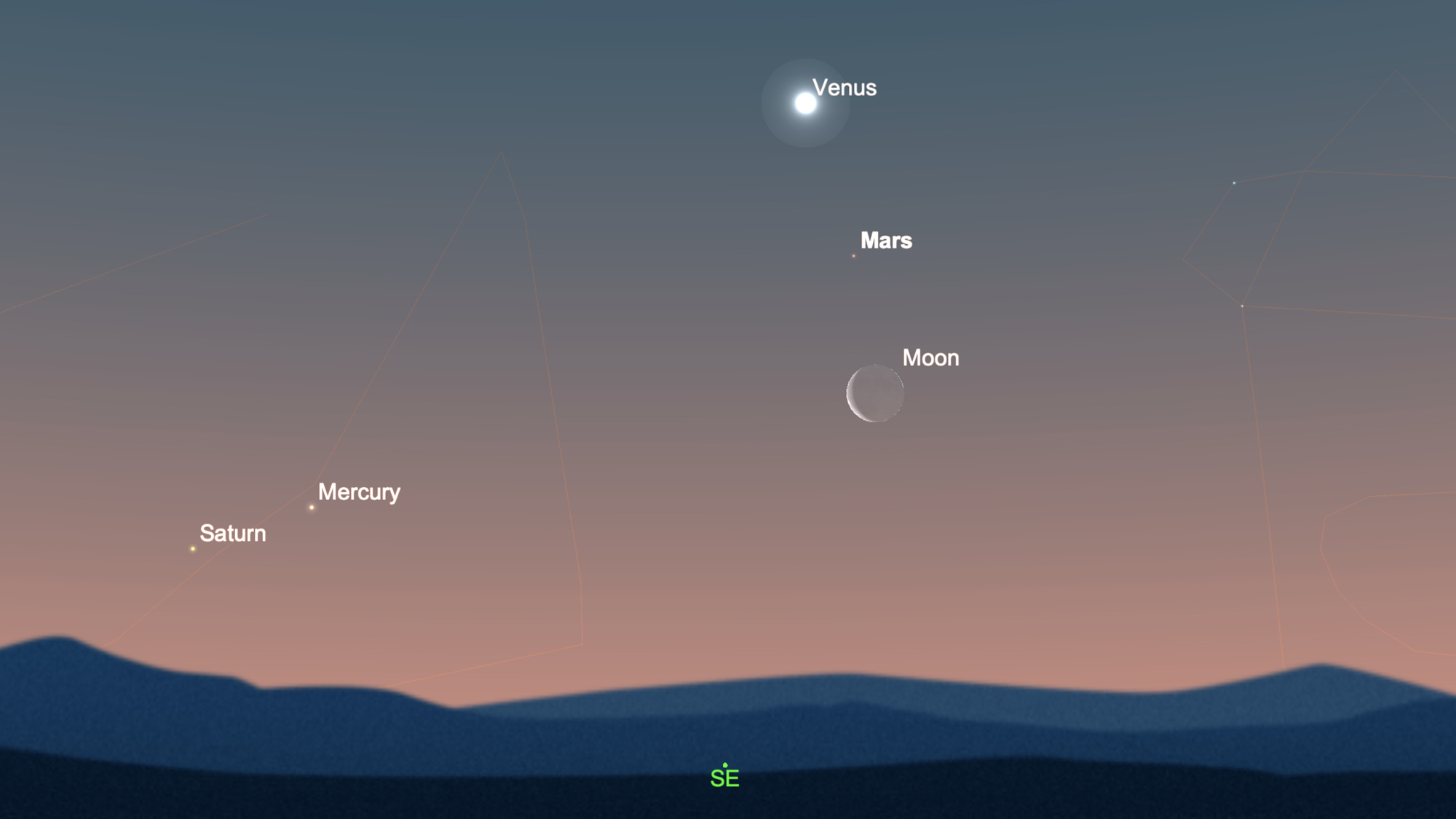See the moon align with Venus and Mars in Sunday's morning sky
The trio is easily visible with the naked eye.

Bright Venus, red Mars and the crescent moon are all lining up for a sky show early in the morning Sunday (Feb. 27).
If you're up and available after 4 a.m. local time, be sure to head outside and look to the southeast. By the time the sun rises in New York City at 6:14 a.m., for example, the three worlds will be 19 degrees above the horizon and well visible above many buildings and ground obstacles.
You can use the moon as an easy pointing device to see Mars (shining at magnitude 0.3 just above the moon) and Venus, the highest of the three worlds at a spectacular -4.6 in magnitude. For perspective, stars visible to the naked eye in dark conditions are magnitude 6 or lower, so these three worlds will be quite easy to see.
Related: The brightest planets in the night sky: How to see them (and when)
Close to the horizon are Saturn and Mercury, which may be difficult to spot if there are obstructions on the horizon. The pair may be easier to spot if you wait a day; the moon will be in another alignment with those planets on Monday morning (Feb. 28).
If you take a photograph of Venus, Mars and the moon let us know! You can send images and comments in to spacephotos@space.com.
In-The-Sky.org warns that the moon, Venus and Mars will not be close enough to each other to be visible in a single binocular or telescopic field of view, but if you have access to this equipment, you can look for craters on the moon. Venus and Mars will appear a little brighter and bigger, but not much different, in a typical amateur set of equipment.
If you're looking for binoculars or a telescope to see planets like Venus and Mars in the night sky, check our our guide for the best binoculars deals of 2021 and the best telescope deals now. If you need equipment, consider our best cameras for astrophotography and best lenses for astrophotography to prepare for the next planet sight.
Breaking space news, the latest updates on rocket launches, skywatching events and more!
Worlds commonly align in Earth's sky in conjunctions, which refer to times when these celestial bodies appear to draw near one another from our planet's perspective. Conjunctions are quite common because the planets, moon and sun all share the same approximate pathway through our sky, called the ecliptic.
Follow Elizabeth Howell on Twitter @howellspace. Follow us on Twitter @Spacedotcom or Facebook.

Elizabeth Howell (she/her), Ph.D., was a staff writer in the spaceflight channel between 2022 and 2024 specializing in Canadian space news. She was contributing writer for Space.com for 10 years from 2012 to 2024. Elizabeth's reporting includes multiple exclusives with the White House, leading world coverage about a lost-and-found space tomato on the International Space Station, witnessing five human spaceflight launches on two continents, flying parabolic, working inside a spacesuit, and participating in a simulated Mars mission. Her latest book, "Why Am I Taller?" (ECW Press, 2022) is co-written with astronaut Dave Williams.
